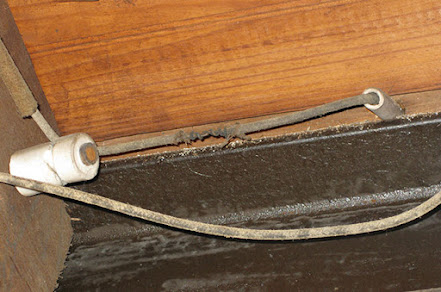In the world of electrical systems, technology has evolved rapidly over the years, bringing us safer and more efficient methods of powering our homes and buildings. However, remnants of the past can still be found in some older properties, such as knob and tube wiring. While knob and tube wiring was once a popular choice for electrical installations, it has since become outdated and poses potential risks. In this article, we will delve into the history of knob and tube wiring, explore its limitations, and discuss the steps you can take to ensure a safer electrical future.
Knob and tube wiring, also known as open wiring, was commonly used from the late 19th century to the early 20th century. It consisted of individual conductors, typically copper, that were run through porcelain insulating tubes and supported by porcelain knobs. This method of electrical installation provided a means to bring electricity to homes and buildings when it was still a relatively new concept.
While knob and tube wiring played a crucial role in electrifying properties at the time, it has several limitations that make it unsuitable for modern electrical needs. One significant concern is its lack of grounding. Knob and tube wiring typically consists of two separate wires, one for hot and one for neutral, without a grounding conductor. This absence of grounding increases the risk of electrical shock and makes it challenging to meet the safety standards required for today's electrical systems.
Another issue with knob and tube wiring is its insulation. Over time, the original insulation materials used in knob and tube wiring can deteriorate, become brittle, or be damaged by rodents or other factors. This degradation can expose the live wires and increase the risk of electrical arcing, leading to potential fire hazards. Furthermore, knob and tube wiring is not designed to handle the electrical demands of modern appliances and devices, such as air conditioners, computers, or high-powered electronics. Overloading the system can result in overheating and pose a fire risk.
If you own or are considering purchasing a property with knob and tube wiring, it is crucial to address these concerns and take steps to ensure safety. Here are some recommended actions:
Consult with a qualified electrician: It is essential to consult with a licensed electrician who has experience working with older electrical systems. They can inspect the wiring, assess its condition, and provide expert advice on the best course of action.
Consider rewiring: In many cases, the best solution is to replace knob and tube wiring with a modern electrical system that meets current safety standards. Complete rewiring ensures the electrical system is safe, reliable, and capable of meeting the demands of modern appliances and technology.
Install GFCIs: Ground Fault Circuit Interrupters (GFCIs) can be installed on circuits served by knob and tube wiring to provide an added layer of protection against electrical shock. GFCIs detect imbalances in electrical currents and quickly shut off power to prevent harm.
Avoid DIY modifications: It is crucial to avoid making any modifications or repairs to knob and tube wiring yourself. Improper alterations can compromise the system's integrity and increase the risk of electrical hazards. Always rely on trained professionals for any electrical work.
Educate yourself: Understanding the limitations and risks associated with knob and tube wiring is essential for your safety. Educate yourself about the signs of deterioration or damage, and be proactive in addressing any concerns promptly.
In conclusion, knob and tube wiring may have served its purpose in the past, but it is no longer suitable for modern electrical needs. Its lack of grounding, outdated insulation, and limited capacity pose safety risks and can lead to potential fire hazards. If you own a property with knob and tube wiring, it is essential to consult with a qualified electrician and take appropriate actions to ensure the safety of your electrical system. By understanding the past and preparing for the future, you can enjoy a safer and more reliable electrical system in your home or building.


No comments:
Post a Comment